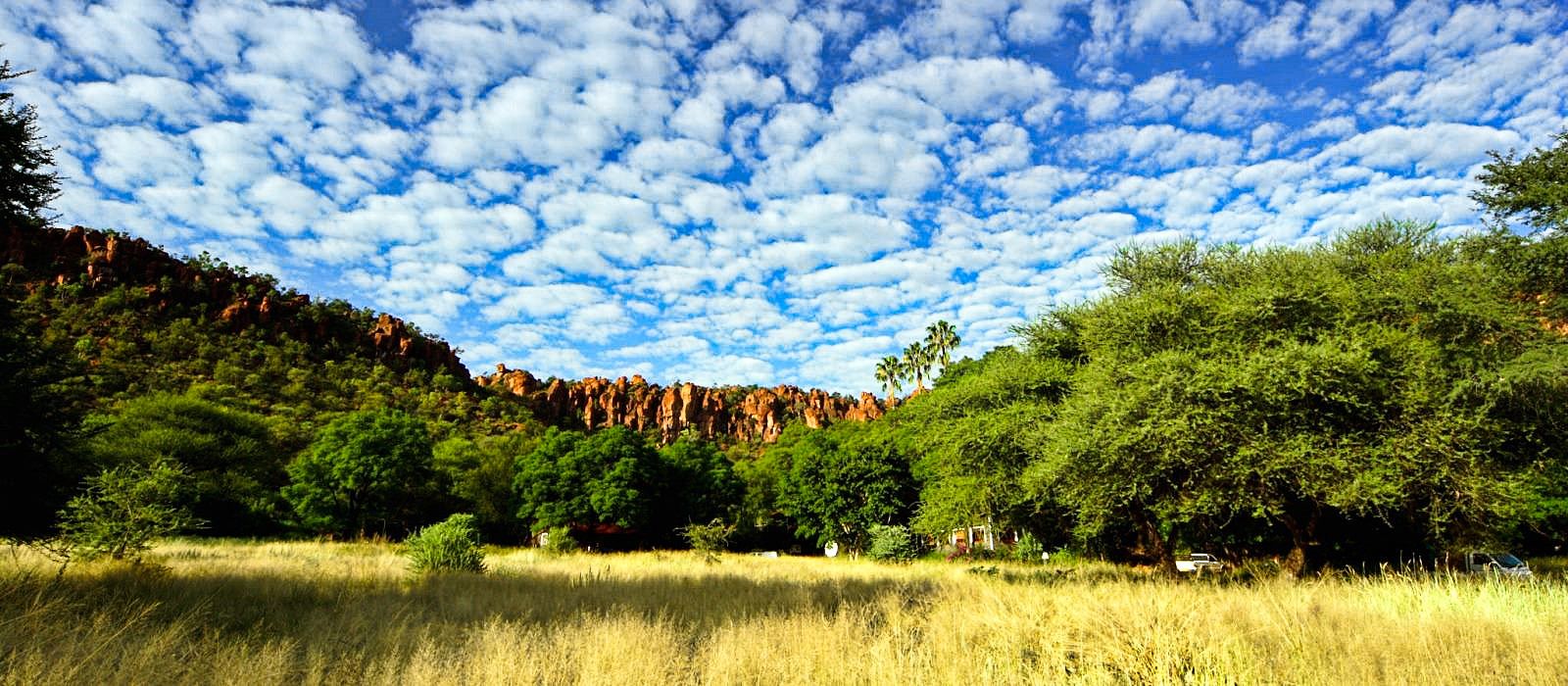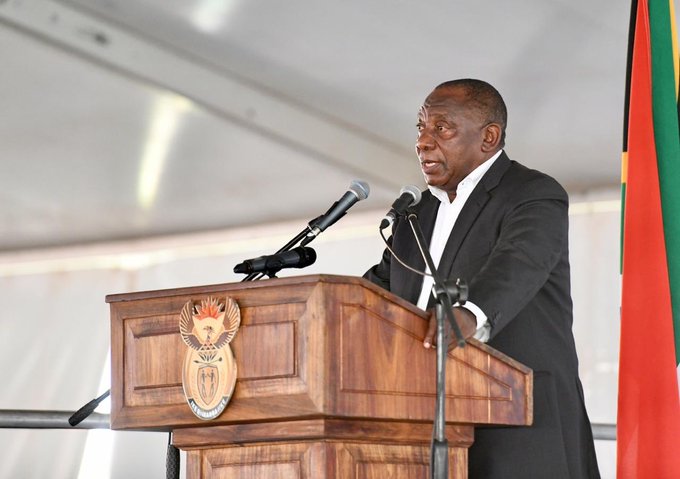Lucas Ledwaba
After missing the bus ferrying people to listen to president Cyril Ramaphosa speak during the launch of the Khawuleza District Development Model in Limpopo this week – Ramadimetja Mabote hitched a lift from a passing police van for the 70 km journey.
She made it to the Shongoane sports stadium in Ga-Shongoane, about 50 km from the town of Lephalale in time for proceedings and the accompanying razzmatazz.
“I came to hear what he [Ramaphosa] says about jobs. I am not working. If he came here then it means maybe he has jobs for us,” said the 29 year-old.
Like many of Lephalale’s youth, Mabote is unemployed and relies on a state social grant for the upkeep of her three children.
A crowd of over 2 000 packed the mini sports ground in the rural village, on a swelteringly hot Tuesday afternoon to hear Ramaphosa speak, bussed in from various areas of the Waterberg and Limpopo.
Perhaps the loud cheers and thundering applause that erupted in the two giant marquees set up on the pitch when Ramaphosa told the crowds gathered there that the coal deposits in the area were projected to
last for the next 90 to 100 years underlined the community’s biggest concern – jobs in abundance.

“When we looked at this district we found that many people in this area are unemployed. Many people are suffering in this district is that not so?
“We found there are many people who rely on social grants. Without social grants there would be hunger. And most of the unemployed are the youth,” Ramaphosa said in Setswana after his pronouncement on the coal deposits.
“That’s the profile we saw, that yes, many people are unemployed. We also found that many people want to go into business but there are no opportunities. Others want to farm but there is no land,” Ramaphosa
continued to loud roars of approval from the crowd which comprised a mixture of youth and mostly the elderly.
Ramaphosa obviously knew that such a pronouncement would no doubt be like sweet music to the ears of people trapped in a largely remote, underdeveloped area which despite being home to the biggest powered dry-cooled coal-fired power station in the world Medupi Power Station; continues to be haunted by high rates of unemployment, a dire lack of economic opportunities and poverty.

When it was first announced the building of the Medupi power station over a year ago triggered excitement and a migration frenzy that saw a sudden influx of people into the small town located 40 km from the international border with Botswana.

Suddenly shanty towns went up on the outskirts of the town, the township of Marapong and rural settlements such as Ga-Shongoane.
A myriad of enterprises never seen before in the town known previously as Ellisras opened up for business.
On the outskirts of town enterprising businessman built different types of accommodation, low budget lodges and quarters to cater for travellers and job seekers who arrived from outlying rural areas and far off places.
In its 2017/18 annual report the Lephalale Local Municipality projects that the town will grow up to five times its size by 2030.
The Lephalale and Waterberg areas are expected to experience a coal mining boom
in the next couple of decades as mentioned by Ramaphosa.
Lephalale which is the biggest municipality in Limpopo by area boasts Medupi Power Station, the Enel Solar Power, the proposed Sekoko coal mine and the opening of new coal mines by among others Exxaro
among some of the projects expected to propel the town’s expansion and create jobs.
But Ramaphosa was careful to throw a word of caution in his speech which he delivered in a mixture of some English and more importantly the languages spoken locally, Sepedi and Setswana.
“Waterberg has great potential. 57% of economy is driven by mining in Waterberg,” Ramaphosa underlined.
He said mining companies in Waterberg are implementing 74 projects to the value of R580 billion, ranging from infrastructure to enterprise development.
But he added that when Medupi which is reportedly nearing completion was being built, there were 18 000 people employed there and that morning he had addressed 4 000 workers.
When in full operation Medupi is expected to employ between 500 and 600 workers. He said the others will go work in other areas and that others will open businesses using the experience they gained working at Medupi.
According to the presidency, the Khawuleza District Development Model is “a new district-based coordination model [which] aims to address service delivery and economic development challenges through the synchronisation of planning across all spheres of government, working alongside social partners such as business and community.”
Before it was launched in the Waterberg this week, the model had already been rolled out and piloted in the OR Tambo district municipality in the Eastern Cape and eThekwini metropolitan municipality in KwaZulu-Natal under the “One District; One Plan; One Budget; One Approach” theme.

While there are moves to transform Lephalale and the Waterberg into a mining area, the area forms part of the Waterberg Biosphere Reserve, where tourism in the form of game farming and hunting are among
the key drawcards.
However this multimillion rand industry remains largely in white hands and blacks only play a minimal role as labourers, a factor which the Limpopo provincial government has been threatening to address for
years.
“We are working through our biodiversity economy strategy to ensure more of our people benefit from the wildlife industry.
“We have heard the call for partnerships between government and other stakeholders to ensure that more black individuals can enter this industry,” Ramaphosa said.
The reality though is that the transformation of the wildlife industry is intrinsically linked to the burning issue of land reform and restitution which remains unresolved.
“There is a great land hunger in this area. We will be working through the district development model to finalise land claims and accelerate the pace of land reform,” the president added.
Ramaphosa appeared to be calming the tempers of environmental rights groups when he mentioned that although the area is endowed with mineral deposits, it can still grow into a tourism powerhouse.
To achieve this, however, he said “requires that we develop our infrastructure, from roads to hotels to reserves, that we implement an effective tourism safety plan, and that we train a new generation of young tourism professionals.”
But he did not say how mining can coexist with wildlife and agriculture, when mining focuses on extraction of natural resources and tourism and agriculture rely on sustainability and preservation.
The scramble for coal has already led to evictions of families and exhumation of graves, issues which have led to a showdown between environmental rights activists.
One of the victims of this is Malesela Stephen Tibanyane, who was evicted from the farm he was born and where his own parents were born and buried in 2014.
His case echoes the fear and loathing of those who are not in favour of mining and may end up as the biggest losers in the scramble.
His family was forced to move into a RDP house in Marapong township and have been battling to return to their land since. The gates to the farm were welded together and their homestead demolished.
The future expansion could mean many more such cases especially for peasants like Tibanyane who are descendants of generations of labour tenants on the vast farms of the Waterberg.
The landscape of this area known as the capital of game farming and hunting is likely to change forever with rail state owned enterprise Transnet having committed to an upgrade of the existing railway line
from Lephalale to Mpumalanga via Thabazimbi, Rustenburg and Pyramid at a cost of R5 bn.
The second phase for the construction of a new heavy-haul rail line from Thabazimbi to Ogies at an estimated R32bn is also planned to transport

hundreds of thousands of tons of coal from the Waterberg.
While the coal scramble has become a curse for Tibanyane, the mineral wealth of the area may serve at last as a blessing to the myriad of unemployed youth like Meshack Monyeki who said Ramaphosa’s
speech gave him hope.
He said he was motivated by the revelation that the Khawuleza model will help to upgrade TVET colleges to provide skills that prepare students for careers in mining.
“We apply for jobs here but then they tell us we have no qualifications to work on the mine,” said the youth from Ga-Monyeki, one of the rural villages under the municipality.
But with the notoriety of the slow moving wheels of government bureaucracy, it may be another long while before the likes of Monyeki reap the benefits of Ramaphosa’s plan.
